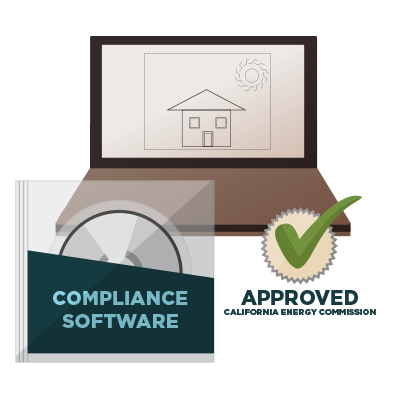TDV is a code compliance metric meant to incorporate the societal and environmental impacts into the cost of energy during a given hour of the year. This includes higher greenhouse gas emission rates and actual cost of electricity from peaker plants during high energy demand on the hottest days of the year.


What are the units of TDV?
The previous unit used for TDV was $/kWh, with dollars used to reflect the “cost” in the TDV value. However, this has been phased out to prevent building owners from misinterpreting a TDV Dollar with the actual energy cost of operating a building.
As of 2019, the units are TDV kBtu and the conversion factor from actual energy used to TDV is kBtu/Energy, which is supposed to look like the units of heat rate for a power plant. The “Energy” unit in the denominator can be anything, but the conversion factors provided are kBtu/kWh for electricity and kBtu/therm for natural gas and propane.
Who made it?
What software can use TDV for code compliance?
TDV calculation is incorporated into CBECC-COM and CBECC-RES, which is from the open source project California Building Energy Code Compliance (CBECC). CBECC-COM and CBECC-RES are used for commercial and residential building code compliance, respectively.
First, a Title 24 code compliant building model is created, inputted into CBECC, and a TDV value per square foot is generated. The building model can then be changed, subject to minimum requirements like ventilation, and as long as the TDV value per square foot is lower than the previous model, then the new building model is considered code compliant. This allows for a performative rather than prescriptive way for a building to be code compliant.
The CBECC output also breaks up the TDV value per square foot into different categories like cooling and lights, a total TDV value per square foot, and a pass or fail grade whether the new building model beat the code compliant model, which can be helpful to evaluate the changes to the building.


How do PV systems and batteries affect TDV calculation?
As of 2019, PV systems and batteries were not allowed to be included in compliance analysis for non-residential and high-rise residential buildings. The CEC is currently considering how PV and batteries should be included in future compliance analysis for 2022 TDV.
In relation to Zero Net Energy (ZNE), this is left up to the researcher. A common practice is for total TDV to be added to or subtracted from when a building draws energy from or provides energy to the grid, respectively.
For batteries, they would add to total TDV for the hours when charging from the grid and subtract from total TDV for the hours when discharging to the grid. However, batteries are typically only charged from PV systems and never draw or send energy into the grid.
For PV systems, if a building is supplying excess energy to neighboring buildings from a large PV array, the TDV for that hour will be negative since the outputted PV energy is replacing typical grid sources.
All the provided methods to calculate TDV in relation to ZNE use this methodology.
What software can use TDV for research?
Necessary conditions
- The correct weather file must be used to calculate TDV since high TDV values are paired with the hottest days.
- Different weather files are used for 2019 and 2022 TDV.
- You must use the provided RunPeriod object since the starting weekday and the start and stop dates are paired with the weather file.
What you, the researcher, must decide
- Choose the SizingPeriod:DesignDay objects appropriate for your building type and equipment.
- Whether or not to use 15-year or 30-year TDV values.
- CBECC-COM uses the 15-year TDV values, but there are 30-year TDV values available for commercial.
- CBECC-RES uses the 30-year TDV values because there are no 15-year TDV values available for residential.
- The 30-year values are essentially an extension of the tariff escalation rates, fuel forecasts, etc. from 15 to 30 years.
Be careful of units
- A unit of energy must be attached to TDV at all times.
- The standard energy unit is kBtu TDV, but current EnergyPlus documentation and example files calculate J TDV instead.
- When comparing TDV from different sources, such as electricity and natural gas, the final energy TDV unit must be the same.
- Check units when comparing your total TDV against published results.
Questions?
Contact Mazen Daher: mdaher@ucdavis.edu

